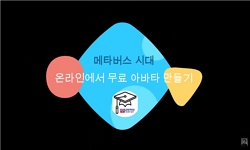(Background and Purpose) The advent of the metaverse and the pervasive influence of the COVID-19 pandemic are both contributing to the growing significance of life in the digital realm. The entertainment industry is actively expanding attempts to use ...
http://chineseinput.net/에서 pinyin(병음)방식으로 중국어를 변환할 수 있습니다.
변환된 중국어를 복사하여 사용하시면 됩니다.
- 中文 을 입력하시려면 zhongwen을 입력하시고 space를누르시면됩니다.
- 北京 을 입력하시려면 beijing을 입력하시고 space를 누르시면 됩니다.

Types and Characteristics of Idol Avatars in Metaverse Entertainment Platforms = 메타버스 엔터테인먼트 플랫폼에서의 아이돌 아바타 사용 유형 및 활용특성
한글로보기부가정보
다국어 초록 (Multilingual Abstract)
(Background and Purpose) The advent of the metaverse and the pervasive influence of the COVID-19 pandemic are both contributing to the growing significance of life in the digital realm. The entertainment industry is actively expanding attempts to use idol avatars on online entertainment platforms as a coping mechanism. However, studies on this topic are primarily biased toward specific aspects such as avatar design and user experience, whereas studies on overall avatar types and use are lacking. This study aims to propose effective strategies for using idol avatars based on different types of metaverse platforms, by outlining the current landscape and characteristics of idol avatar usage across various metaverse entertainment platforms. (Method) We categorized avatars into four distinct types: character-type, intelligent character-type, humanoid-type, and intelligent humanoid-type. Thereafter, we analyzed representative cases of idol avatar deployment across four metaverse types―Zepeto for lifelogging, girl group Aespa for mirror world, K/DA’s League of Legends concert for augmented reality, and Travis Scott’s Fortnite concert for virtual world. Using this analysis, we outlined prevailing trends in avatar usage across different metaverse platforms. (Results) All types of avatars have proven to be useful across various metaverse entertainment platforms, and the use of more sophisticated avatars has been steadily growing owing to technological advancements. The lifelogging platform Zepeto uses character-type avatars, which can be rendered in either two-dimensional or three-dimensional cartoon styles. These avatars are incapable of interacting with other users, however, they enable rapid creation and circulation across platforms. The mirror world avatars of the girl group Aespa are intelligent character types, resembling cartoons, however, they employ artificial intelligence to enable sophisticated communication and interaction with fans. At K/DA's augmented reality concert, the avatars take on a humanoid appearance and feature intricate representations of game characters. However, they do not interact with users, and all of the content for the performances must be prepared in advance. Finally, Travis Scott's concert avatars in the virtual world are intelligent humanoid types with sophisticated appearances. They enable real-time interaction with the audience, thus allowing for the unfolding of fantastic concert content that would be impossible to achieve in the real world. (Conclusion) The growing incorporation of idol avatars in the metaverse entertainment sector showcases a dynamic environment where various avatar types are used across different platform modes. Idol avatars have many advantages compared with real idols; however, depending on the type of platform, each type of idol avatar has both positives and negatives associated with it. Consequently, it is necessary to strike a balance between the benefits and drawbacks associated with the various types of avatars and metaverse entertainment.
동일학술지(권/호) 다른 논문
-
- 한국공간디자인학회
- 인스후이 ( Yin Sihui )
- 2024
- KCI등재
-
- 한국공간디자인학회
- 강우석 ( Kang Wooseok )
- 2024
- KCI등재
-
Analysis and comparative study on the status quo of smart farms in China, Korea and Japan
- 한국공간디자인학회
- 진려 ( Chen Li )
- 2024
- KCI등재
-
A study on Affordance Design Elements - Case Study on Metaverse University Campuses -
- 한국공간디자인학회
- 김주영 ( Kim Jooyoung )
- 2024
- KCI등재




 KCI
KCI KISS
KISS






